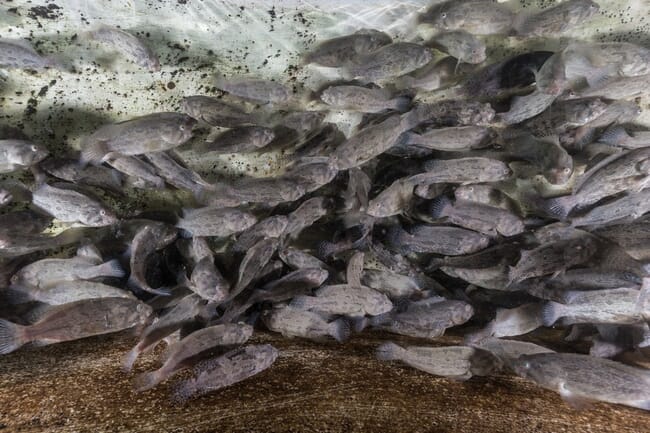
© Kyra Hoevenaars
So argued Yoav Dagan, VP of business development at AquaMaof, in a webinar on land-based aquaculture production. While investments in the RAS sector – and the discussion in the event itself – mainly related to Atlantic salmon, Dagan was asked about other candidate species.
“I think it’s a difficult question to answer, but as I see it today the shrimp is definitely going to be the next generation [after salmon] and we’ve invested a lot in the R&D on that – both in the RAS system for the water treatment, but actually also in genetics, with the CRISPR technology you can actually elevate the densities. For example, for less hostility, less cannibalism in the animals, we can crowd them a little bit more, and so shrimp is good,” he explained.
Meanwhile, he noted that grouper is potentially the “optimal species for the land-based because it groups together… for the people that are concerned with the welfare actually the grouper is a demonstration because their preference is to crowd together to be protected”.
However, Dagan left perhaps his most surprising tip for the top until the end of the Intrafish-organised event.
“Something that is interesting lately is catfish,” said Dagan, who has over 30 years' experience in the aquaculture sector.
He went on to explain that catfish species are a hugely popular protein source in areas such as West Africa, where local capture fishery landings were decreasing and the local demand for food was growing. And he argued that using RAS, not just traditional earthen ponds, was a feasible way to help to do this.
“They need a very cheap product, a very cheap species that can bring a lot of value, a lot of protein source to their diets. And I think, from that perspective, that catfish could be a very interesting species, because the ability to be in very high densities. For example in Slovakia we have densities of 400 kg per cubic metre, with a very good result and the fish are growing tremendously, exceptionally well without any disease and without any stress. So this is the answer also,” he said.
While catfish might be a comparatively low value fish, and RAS traditionally seen as a very expensive means of production Dagan concluded that the numbers could still add up.
“I think that today, with the existing technology, we are able to produce [fish in RAS] as cheap as the cages, and even less,” he concluded.




